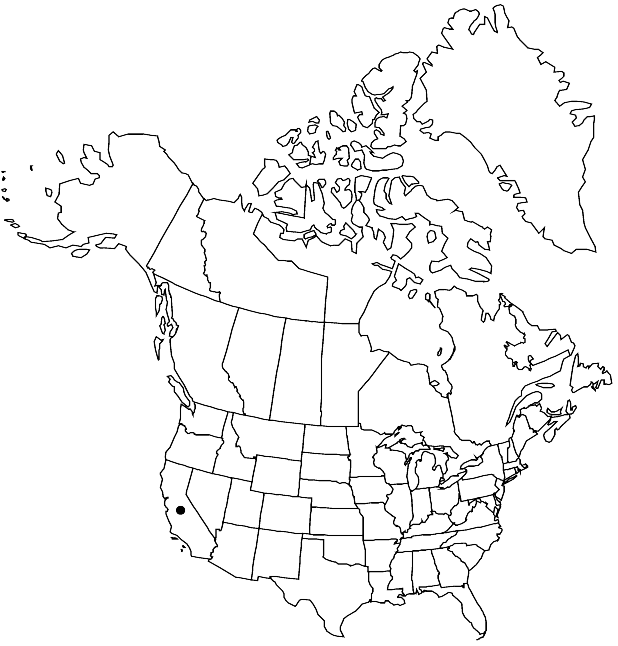Boechera rollei
Novon 13: 389. 2003.
Perennials; long-lived; sexual; caudex woody. Stems usually 1 per caudex branch, arising from center of rosette, elevated above ground surface on woody base, 1.5–2.5 dm, glabrous throughout. Basal leaves: blade oblanceolate, 3–8 mm wide, margins entire, ciliate proximally, trichomes (simple), 0.2–0.7 mm, surfaces glabrous or sparsely pubescent, trichomes short-stalked, 2–4-rayed, 0.2–0.4 mm. Cauline leaves: 6–12, sometimes concealing stem proximally; blade auricles 0.5–2.5 mm, surfaces of distalmost leaves glabrous. Racemes 3–7-flowered, unbranched. Fruiting pedicels strongly curved proximally, 4–6 mm, glabrous. Flowers divaricate-ascending at anthesis; sepals glabrous; petals creamy white, 8–11 × 2–2.5 mm, glabrous; pollen ellipsoid. Fruits pendent, not appressed to rachis, not secund, straight to slightly curved, edges undulate (not parallel), 3.5–6 cm × 2.5–3.5 mm; valves glabrous; ovules 14–22 per ovary; style 0.5–1 mm. Seeds uniseriate, 3–4 × 1.5–2 mm; wing distal and proximal, 0.3–0.6 mm wide.
Phenology: Flowering Aug.
Habitat: Peridotite rocks on sparsely forested slopes
Elevation: 1600-1800 m
Discussion
Boechera rollei is easily distinguished from the habitally similar B. suffrutescens by its longer (8–11 versus 4.5–6 mm) petals, narrower (2.5–3.5 versus 3–6 mm) fruits, and narrower (0.3–0.6 versus 0.8–1.5 mm) seed wings. This distinctive sexual species is known only from the vicinity of the type locality on the divide between the Applegate and Klamath Rivers in Siskiyou County.
Selected References
None.
Lower Taxa
"elongated" is not a number."thick" is not a number."dm" is not declared as a valid unit of measurement for this property.

